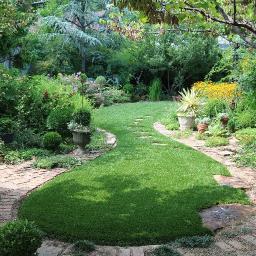


Artificial turf offers a durable, low-maintenance alternative to natural grass, and it holds up exceptionally well in various weather conditions—including winter. However, like any outdoor surface, synthetic turf benefits from seasonal care to maintain its longevity and appearance. Winter brings unique challenges such as freezing temperatures, snow accumulation, and ice formation. Proper winter care ensures your artificial turf remains clean, intact, and ready for use when warmer weather returns.
Here’s a comprehensive guide to the do’s and don’ts of winter care for artificial turf:
Before the first snowfall, remove fallen leaves, twigs, and any other organic material from the surface of your turf. Debris left on the turf over the winter can decompose and create mold, odors, or stains.
Tip: Use a plastic rake, leaf blower, or stiff-bristled broom—avoid anything with metal tines that could damage the turf fibers.
While artificial turf can handle snow accumulation, there are times when it makes sense to clear it—especially in high-traffic areas or for sports use.
Use a plastic snow shovel or a snow blower with rubber blades to gently clear snow. Remove only the top layers, allowing a thin layer of snow or frost to melt naturally without scraping the turf.
Note: Do not use metal tools, as they can tear or puncture the turf’s surface.
Artificial turf is designed to withstand winter weather. Ice and frost will not damage the turf, but attempting to break or chip ice off can lead to tears or dislodged infill.
If you’re not in a rush to use the area, let nature take its course. Direct sunlight and above-freezing temperatures will help melt the ice safely.
After snow and ice melt, you may notice that turf fibers look matted or flattened. Use a stiff, synthetic-bristle broom or brush to fluff the turf back up and restore its natural appearance.
Brushing also helps redistribute infill evenly, ensuring consistent feel and performance across the surface.
Winter is a good time to evaluate your turf’s drainage capabilities. After a snowmelt or rainfall, check for puddles or water buildup. These could indicate a need for improved sub-base drainage or minor surface grading adjustments.
Prompt attention to drainage problems can prevent long-term damage to both the turf and the foundation below it.
One of the biggest mistakes people make is using rock salt or chemical de-icers on artificial turf. While these products can melt ice, they can also:
Leave residues that clog turf drainage systems
Stain or degrade synthetic fibers
Disrupt the infill balance and performance
Harm nearby plants, pets, or wildlife
If absolutely necessary, opt for turf-safe de-icing products, but the best strategy is usually patience and sunlight.
Never try to chisel, chip, or hack at ice that forms on artificial turf. This can lead to serious damage including:
Torn turf fibers
Dislodged seams
Punctures in the turf backing
Instead, let the ice melt naturally or carefully sweep off any loose snow from the top layer.
Heavy foot traffic on snow-covered turf can lead to compacted snow or ice patches, which are slower to melt and can be slippery. In high-use areas, such as play spaces or sports fields, consider clearing snow regularly to prevent compaction.
Light snow may not need removal, but deep or wet snow can turn into thick ice if left untouched.
Avoid parking vehicles, placing snow blowers, or storing firewood on artificial turf during the winter. These can:
Crush the infill
Flatten turf fibers
Leave lasting impressions or surface damage
If you need to store anything outdoors, place it on a hard surface like pavement or use protective mats underneath.
Artificial turf is usable year-round, but avoid excessive activity when the turf is overly wet or slushy. These conditions can cause the turf to be slippery, increasing the risk of injury.
Moreover, foot traffic in wet conditions can disturb the infill and make brushing and re-leveling necessary.
Schedule a Pre-Winter Inspection: Check for any loose seams, infill displacement, or drainage issues before the first snow hits. It’s easier to fix problems in the fall than mid-winter.
Secure Perimeter Edges: If your turf has exposed edges, ensure they’re properly pinned or adhered. Loose edges can curl in freeze-thaw cycles.
Monitor Pet Areas: If your turf is used as a pet bathroom area, continue cleaning it through the winter. Use an enzyme-based cleaner to prevent odor buildup and maintain hygiene.
No. In fact, artificial turf is designed to withstand snow and freezing temperatures. The materials used (typically polyethylene and polypropylene) are weather-resistant and UV-stabilized. However, long-term performance and visual appeal depend on smart winter care.
By following the right practices, you can ensure your turf rebounds beautifully in spring, with no signs of wear or winter damage.
Winter may bring harsh conditions, but artificial turf is built to last through it all—with the right care. Avoid using chemicals, metal tools, and heavy pressure during the cold months. Instead, focus on gentle maintenance techniques like brushing, debris removal, and safe snow clearing.
Whether your turf is a backyard lawn, a pet area, or a sports field, these do’s and don’ts will help preserve its integrity, appearance, and functionality all year long.
With just a little attention during the winter, your artificial turf will be ready to green up and shine again as soon as spring arrives.
Verdigrass is a trusted artificial grass store specializing in high-quality turf solutions for sports playgrounds, landscaping, and pet areas. Whether you're outfitting a residential lawn or a commercial facility, Verdigrass offers durable, realistic, and low-maintenance synthetic grass designed for year-round performance. Their products are built to withstand all weather conditions, including harsh winters, making them a smart choice for any project.
| No comments yet. Be the first. |